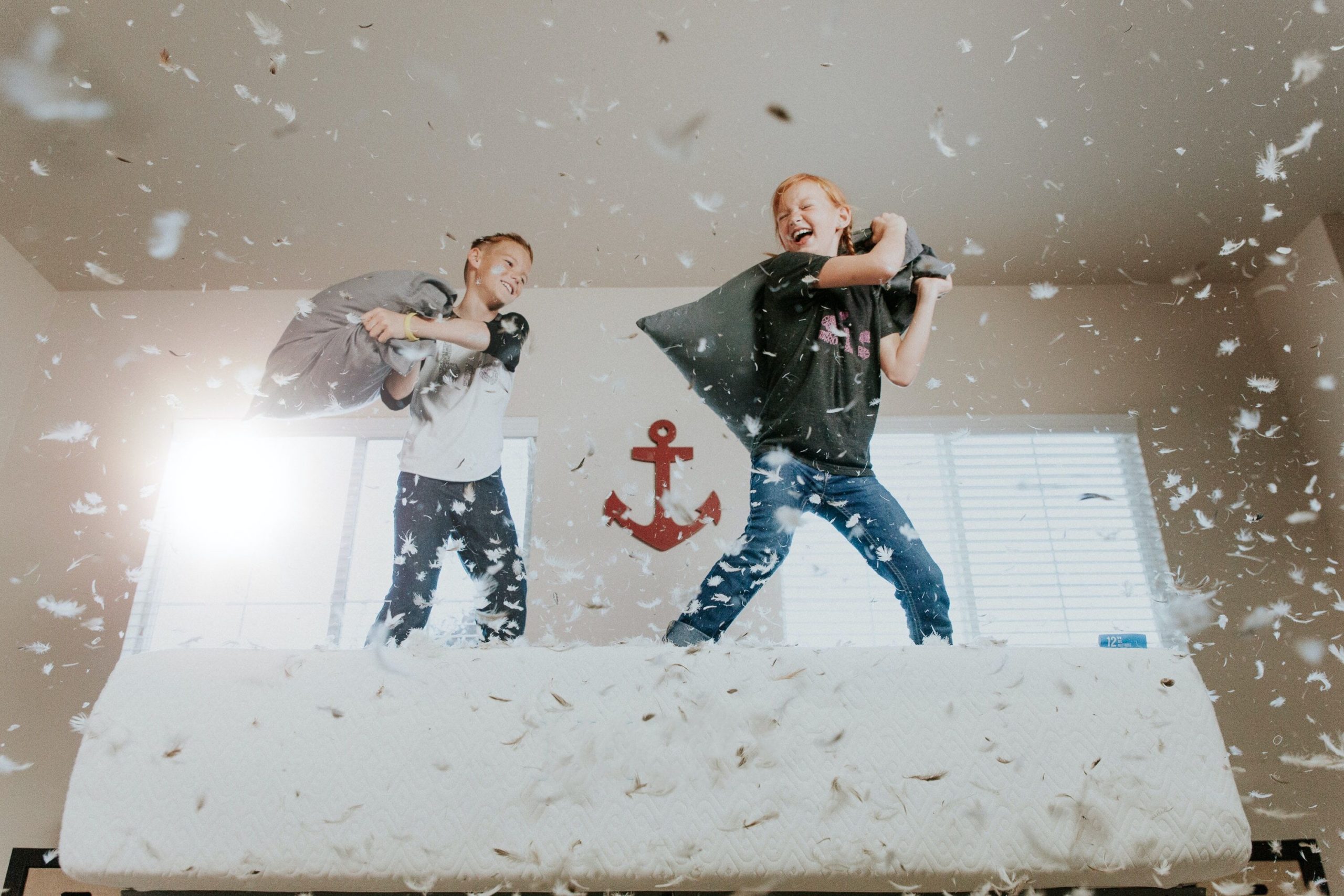We can’t explore the very modern issue of vanity sizing without looking at the wider flawed clothing sizes systems we’ve inherited. For most shoppers, vanity sizing is a commonly accepted distortion of accurate sizing designed to satisfy the shopper’s ego. While accusations of distorting our body image and contributing to eating disorders might be common, this approach stops us from identifying the source of the issue. Dig a little deeper and we discover the idea of ‘accurate sizing’ itself, is actually a myth; one that could be easily solved.
Serving the consumer’s ego.
Contrary to popular belief, standard sizing for fashion doesn’t really exist, and it never has. Size charts imply a system exists but this varies from brand to brand, and country to country. Even apparel tried out by the same woman from the same range at the same brand can demonstrate sizing issues.
While dress sizes have been around since 1958, the precise actual measurements for a size 8 is not a universal constant from one store to the next. This is even more non-specific for sizes such as ‘small’, ‘medium’ or ‘large’ where the clothing retailer often assigns a value based on how they want shoppers to feel. Imagine if everywhere you shop, you’re a large and then one day you walk into a store and discover that, here, in this one store, you’re actually a medium. Many of us appreciate seeing smaller sizes on the label when we shop, that’s just human nature. These smaller sizes can be a powerful motivator for return and repeated customers for brands. While that explains vanity sizing, it’s still only half the story.
If sizing and size charts are already inconsistent, then is the inconsistency in vanity sizing always designed to flatter the ego of the consumer? Some of the time, yes. But other times it can be used to ensure a specific type of clothing fit. Generally referred to as ‘size inflation’, the dimensions of a garment might be smaller than the label because the apparel is supposed to fit close to the body. For the consumer, this can have the opposite effect of making them believe they might have gone up a clothing size. In reality, vanity sizing and size inflation imply steps taken to satisfy the ego of the shopper, when in reality it is a symptom of the unregulated inconsistencies and whims of brands, manufacturers and retailers.
The problem
Multiple attempts have been made over the years to try and standardise the clothing industry.
In the 1800’s, chest, waist and leg measurements were used to determine the best fit for military uniforms. While these standardised sizings helped speed up the manufacturing process they didn’t equal a perfect size fit for every soldier. Then, as now, men would often buy the closest fit and then require adjustments to the sleeves and trousers for comfort.
By the 1940’s, research into the dimensions and proportions of women’s bodies allowed for the first accurate sizing system for clothing. In the following two decades, this system was first taken up in America with similar systems adopted across the world.
By the time sizing systems had permeated the global fashion industry, the clothing styles, lifestyle, fit and bodies of women had changed. In 1970, the standards were updated and clothing manufacturers and retailers took up the new directives on a voluntary basis. For a time, two conflicting sizing systems were in operation simultaneously.
For women in the US, the 1980’s were even more confusing. A botched attempt to switch from inches to centimetres was immediately followed by the US Department of Commerce withdrawing from a globally accepted size standard. For retailers dealing with overseas producers this led to dramatic inconsistencies and unwelcome clothing waste.
Finally, by 1995, new international sizing standards were agreed. On paper this was a huge step in the right direction, however, clothing retailers were under no pressure to adopt the standard and many simply ignored it.
Throughout the 90’s, noughties and teens shoppers have discovered that a size 12 dress in four different shops will likely fit differently. In the US, the increasing average weight and body size has increased, and the rules for sizing have gone out the window. In many stores, a size 12 in 1958, would now be a size 6. This level of vanity sizing has rendered size labels meaningless.
So what happened? Did the industry and the public just give up on the idea of accurate and simplified clothing sizing? Partly, yes. But also, a new mode of shopping came into being that seemed to offer a solution.
The new retail model
On the surface, the convenience of returns has made the issue of inaccurate sizing a thing of the past. Consumers frequently order new fashions online in multiple sizes and return the ill fitting pieces. While this seems like a solution for the consumer, it creates a major headache for the retailer and creates unnecessary emissions that negatively impact the planet. More often than not, retailers are unable to sell the returned items. They can prove too costly to reprocess, repackage and resell and simply end up being incinerated or sent to a landfill.
This model is also unsustainable from an economic perspective and will lead to increasing costs for the retailer which will ultimately mean higher costs for the consumer.
While many industry figures are looking at how the industry can improve its manufacturing processes and create a circular textile economy, most overlook the issue of inconsistent sizing. By adopting a standardised and accurate clothing size system, retailers can eliminate a large percentage of returns and give shoppers greater shopping confidence.
Is there such a thing as a standard size?
In the 1930’s, the US Government backed research into sizing had one major flaw that still impacts us today. Their assumption that there can be standardised clothing sizes was based on the fact they were only measuring the bodies of semi-affluent white women.
As America became more culturally and racially diverse, the set of dimensions they arrived at only represented 8% of the population. In truth, all attempts at standardisation throughout the world have struggled to gain a solid foothold because bodies are not standardised.
Any collectivised system that claims to be perfect will always only ever be perfect for one group of similar shaped individuals. These collectives are often broken down along racial lines meaning women of African descent often struggle more than most to fit into women’s apparel. But this idea is also fraught with complications. By diving sizes along racial body types ignores the other factors. An African American weightlifter from LA can have a radically different figure to a mixed race office worker in Florida. Creating many brands that offer to cater to black bodies assumes all black bodies are the same.

New niche brands and vanity sizing both add a layer of complexity to a failing system. By attempting to cater to niche body shapes and trying to flatter the egos of consumers, we have made a flawed system even less reliable. Clothes don’t need to be segmented according to body types, race or style. They need to be segmented for the individual.
The solution
As businesses gradually come to realise the existing model is unsustainable with clothes returns impacting up to 30% of a businesses profits, they will have to look for viable solutions. Without returning to the bespoke tailoring and its associated costs, we need a more personalised measuring system that uses smart technology to analyse the body and match with best-fit clothing.
This isn’t the fantasy of a distant sci-fi utopia, the technology exists today and could be used to provide a better service to consumers, reduce returns and lower economic and environmental waste.
By revisiting sizing standards and recognising that every body is different, we can eradicate the confusion and inconsistency of vanity sizing in the clothing industry. Brands can offer a more personalised and bespoke service without having to resort to making more clothes or absorbing the exorbitant costs of ‘free’ returns.
The tools exist today – software and camera technology that can connect to the online shopping experience and deliver tailor measured dimensions securely to the retailer. Simple tools that can ensure shoppers are matched with the right size clothes. Size 8 jeans that fit, women’s pants that offer a good fit, smaller size dresses that flatter, comfortable underwear that fits your exact bust size and so much more.
Brands already stock different sizes and can cater to their customers different shapes
and sizes. The issue is that the garments are not being matched properly to the bodies. By using data, manufacturers and retailers can better accommodate and
deliver a better shopping experience for all.
Never Miss Out
Sign up to receive our latest news and insights

Thank you!
we’ll keep you updated




